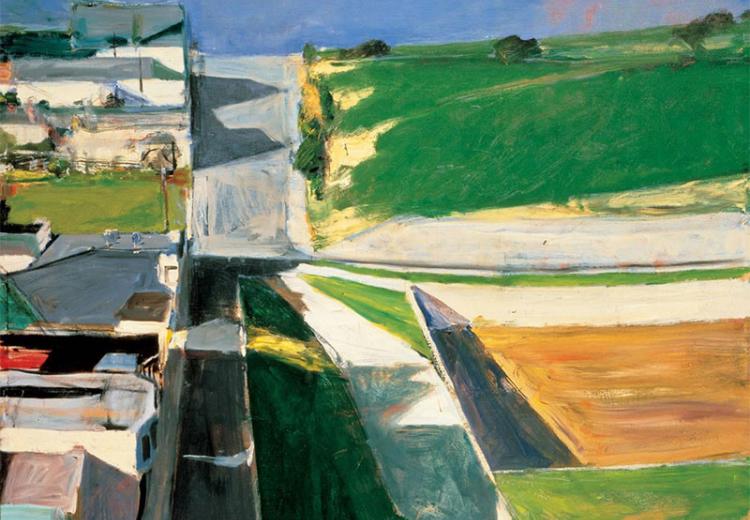Building Suburbia: Highways and Housing in Postwar America

This abstract composition by Richard Diebenkorn illustrates the transformation of postwar America by automobiles and highways, as well as housing.
"This is the new suburbia, the packaged villages that have become the dormitory of the new generation of organization men. They are not typical American communities, but because they provide such a cross section of young organization people we can see in bolder relief than elsewhere the kind of world organization man wants and may in time bring about."
William Whyte, The Organization Man, 1956
The postwar United States experienced a dramatic economic boom—and a dramatic reorientation of American ideals of the home. Prior to the war, Americans had lived predominantly in metropolitan areas where they could find jobs and housing. But in the post-war years, population growth occurred not in central cities, but in the suburban areas that ringed the urban core. Cities, long the heart of urban society and culture, lost jobs and population. By 1960, almost as many Americans lived in suburban areas as in city centers.
This lesson highlights the changing relationship between the city center and the suburb in the postwar decades, especially in the 1950s. Students will look at the legislation leading up to and including the Federal Highway Act of 1956. They will also examine documents about the history of Levittown, the most famous and most important of the postwar suburban planned developments
Guiding Questions
What were the opportunities and challenges which the growth of suburbs offered postwar Americans?
Learning Objectives
Understand the growth of suburbs in the 1950s and 1960s.
Explain how changes in postwar governmental policies and popular ideology transformed residential patterns and family life in the center city and the suburbs of the 1950s.
Explain how the car and highways transformed metropolitan life.
